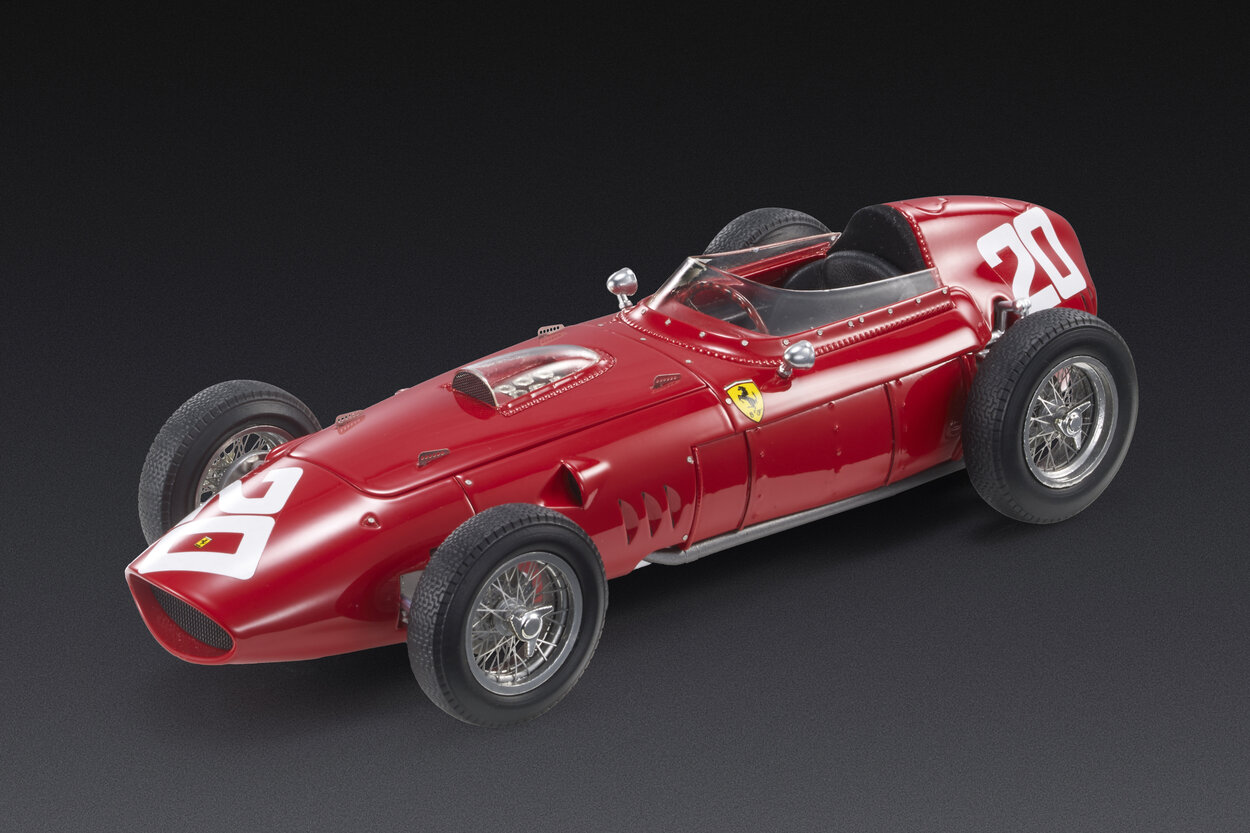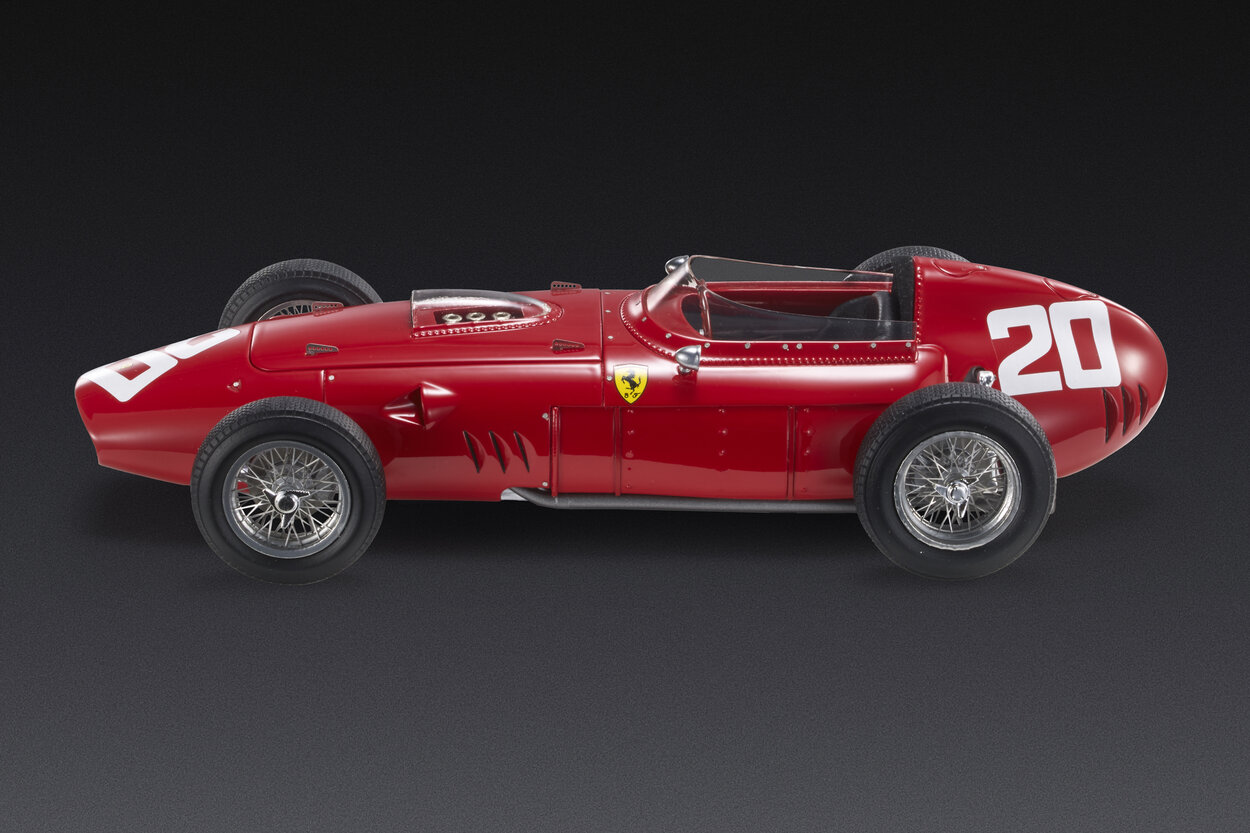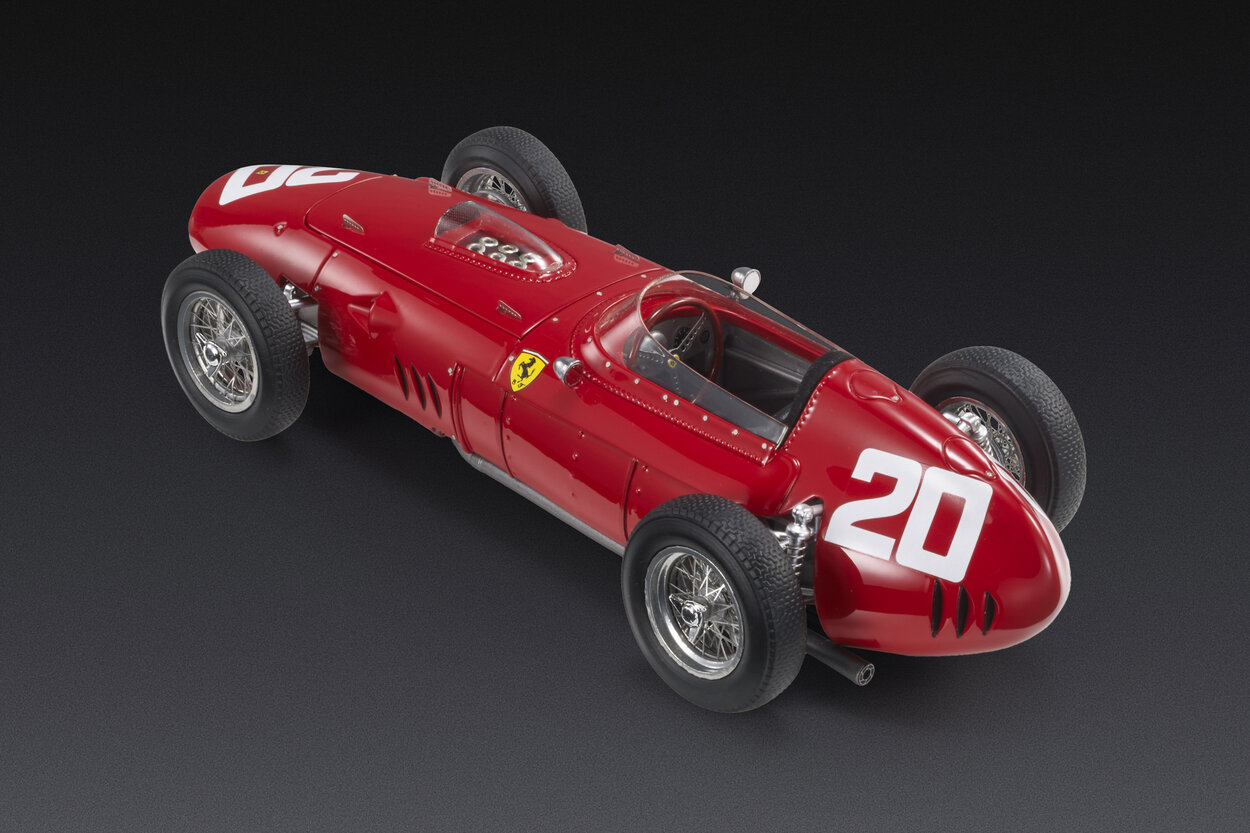Ferrari 256
The 256 is the evolution of the 1958 championship-winning 246 model. However, by 1960, it is an out-dated car. Following the revolutionary Cooper T51, Formula 1 teams are beginning to position the engine centrally, behind the driver. Not Ferrari. Enzo Ferrari is a traditionalist, and above all, before spending money on solutions that could be fleeting, he wants to be sure of the step he must take. The 1960 season and the poor competitiveness of the 256 will give him the confirmation he was seeking.
The architecture is the same as the 246. The bodywork is made more aerodynamic than the previous model thanks to the skilful work of Medardo Fantuzzi. The major innovation is represented by the engine, which is still the V6, but with a displacement increased to 2474 cm3 for a maximum power now of 290 hp. The engine has also been moved forward by 25 cm and offset in the opposite direction, meaning it is now positioned from left to right, to ensure that the transmission passes alongside the driver’s seat in order to lower the driving position.

Drivers:
Phil Hill: The American driver does what he can behind the wheel of a car now obsolete from a technical standpoint. He manages to bring it to the third step of the podium in Monaco and to a victory in the Italian Grand Prix. The race at Monza is boycotted by all English teams in protest against the organizers’ decision to use the high-speed oval, deemed too dangerous for 1960 cars.
Wolfgang von Trips: Taffy’s 1960 season lacks highlights. The car naturally doesn’t help him to stand out. He will score points five times but will never make it onto the podium.
Cliff Allison: The Englishman brings the 256 to an unexpected second place in the Argentine Grand Prix, which opens the 1960 season. It is his penultimate race in Formula 1 and the best result of his short career.
Richie Ginther: It’s the American driver’s first season in Formula 1. He competes in only three races but scores a point in Monaco and Zandvoort and steps onto the second step of the podium at Monza.
Our model cars:

Also new are the disc brakes and telescopic shock absorbers. After the controversies following the serious accident in the final stages of the 1957 Mille Miglia, Ferrari abandoned Englebert tires and now adopts Dunlop.
Beyond a third-place finish in Monaco, the only day of glory for the Ferrari 256 is the victory in the 1960 Italian Grand Prix, made possible by the decision to also race on the high-speed circuit to fully exploit the power of the Prancing Horse’s 6-cylinder engine.

